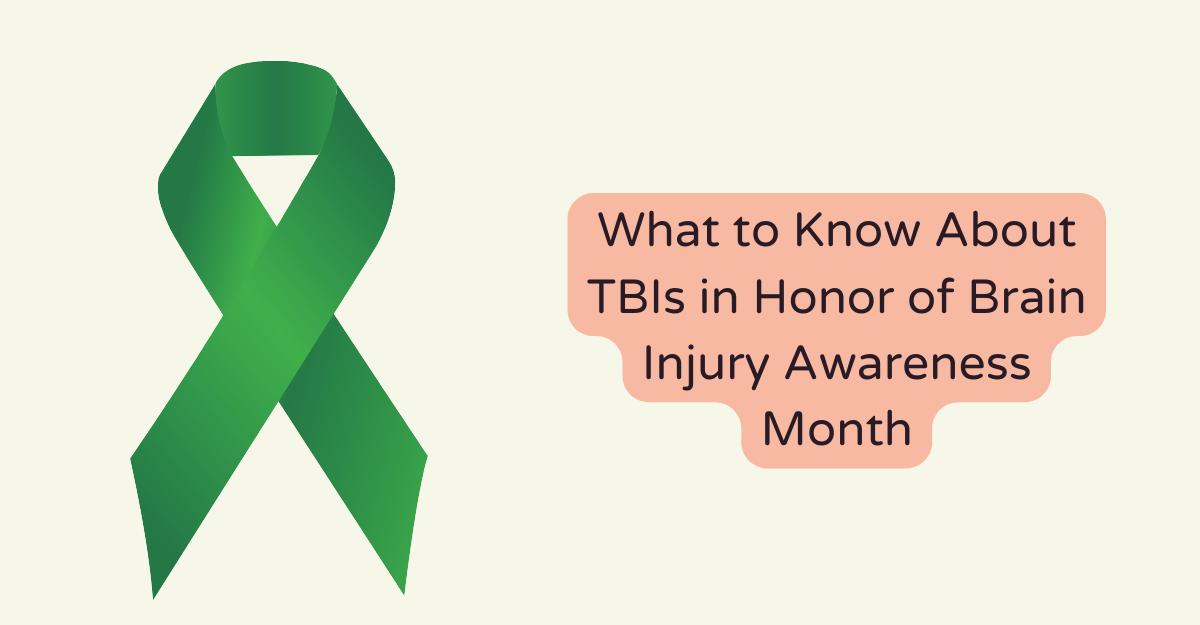
What to Know About TBIs in Honor of Brain Injury Awareness Month
March marks Brain Injury Awareness Month, dedicated to shedding light on the prevalence, causes, and impact of Traumatic Brain Injuries (TBIs). This comprehensive article aims to equip readers with an in-depth understanding of TBIs, covering key aspects and emphasizing the importance of awareness, prevention, and timely intervention.
What is a Traumatic Brain Injury (TBI)?
Traumatic Brain Injuries result from external forces impacting the head, ranging from mild concussions to severe, life-altering injuries. Recognizing this spectrum is crucial for understanding the potential consequences of a TBI.
TBIs can occur due to various incidents like falls, accidents, or sports injuries. Identifying common causes allows individuals to implement preventive measures.
TBIs can significantly affect memory, cognition, and emotional well-being. This insight emphasizes the need for prompt intervention to mitigate long-term effects.
Incidence and Prevalence
Globally, millions experience TBIs annually, with the U.S. witnessing a substantial number of cases. Understanding the prevalence underscores the urgency of awareness and prevention. Further, certain populations, such as the elderly, athletes, and military personnel, are more vulnerable to TBIs. Recognizing these demographics informs targeted prevention and intervention strategies.
Types of Traumatic Brain Injuries
TBIs encompass mild, moderate, and severe cases, each with unique characteristics. This understanding aids healthcare professionals in tailoring treatment plans to individual needs.
Concussions
Commonly known as mild TBIs, concussions can have immediate or delayed symptoms, emphasizing the importance of proper assessment and management.
Diffuse Axonal Injury (DAI) and Contusions
Severe TBIs, like DAI and contusions, can result in lasting effects. Recognizing the severity is crucial for ensuring timely and appropriate medical attention.
Signs and Symptoms
Identifying immediate symptoms, such as loss of consciousness or confusion, is crucial for determining the severity of a TBI and initiating prompt medical intervention. Recognizing delayed or persistent symptoms, such as headaches and mood changes, is essential for post-injury management and long-term rehabilitation planning. Understanding when to seek medical attention is crucial for individuals and caregivers. Early intervention significantly impacts recovery trajectories for those with TBIs.
Treatment and Rehabilitation
Immediate medical attention, including diagnostic imaging and stabilization, is vital in the acute phase of TBIs, minimizing long-term effects. Rehabilitation, involving a multidisciplinary team, focuses on restoring function and improving the quality of life for TBI survivors. Collaborative efforts among healthcare professionals are essential for addressing the diverse needs of TBI patients during their recovery journey.
Prevention Strategies
Emphasizing preventive measures, such as wearing helmets and safety protocols, is crucial for reducing the incidence of TBIs in various settings. Practical tips for minimizing risks empower individuals to take proactive steps in creating safer environments at home, in sports, or at work. Encouraging consistent use of protective gear, such as helmets, and promoting safety awareness contributes to reducing the severity of TBIs in various scenarios.
Legal Considerations
Understanding the legal aspects related to TBIs, including liability and compensation, provides clarity during challenging times. Exploring legal avenues for compensation ensures that TBI victims receive the support they need for medical expenses and rehabilitation. Consulting with an experienced personal injury lawyer in Las Vegas can help victims navigate the legal system and ensure they get the compensation they deserve.
A holistic understanding of TBIs is paramount in promoting Brain Injury Awareness Month’s objectives. By grasping the causes, signs, and types of TBIs, individuals can actively contribute to prevention efforts and support those affected. Timely intervention, rehabilitation, and a collaborative approach among healthcare professionals and legal resources pave the way for improved outcomes. As we commemorate Brain Injury Awareness Month, let’s foster an environment of understanding and empathy, working together to mitigate the impact of TBIs on individuals and communities.






